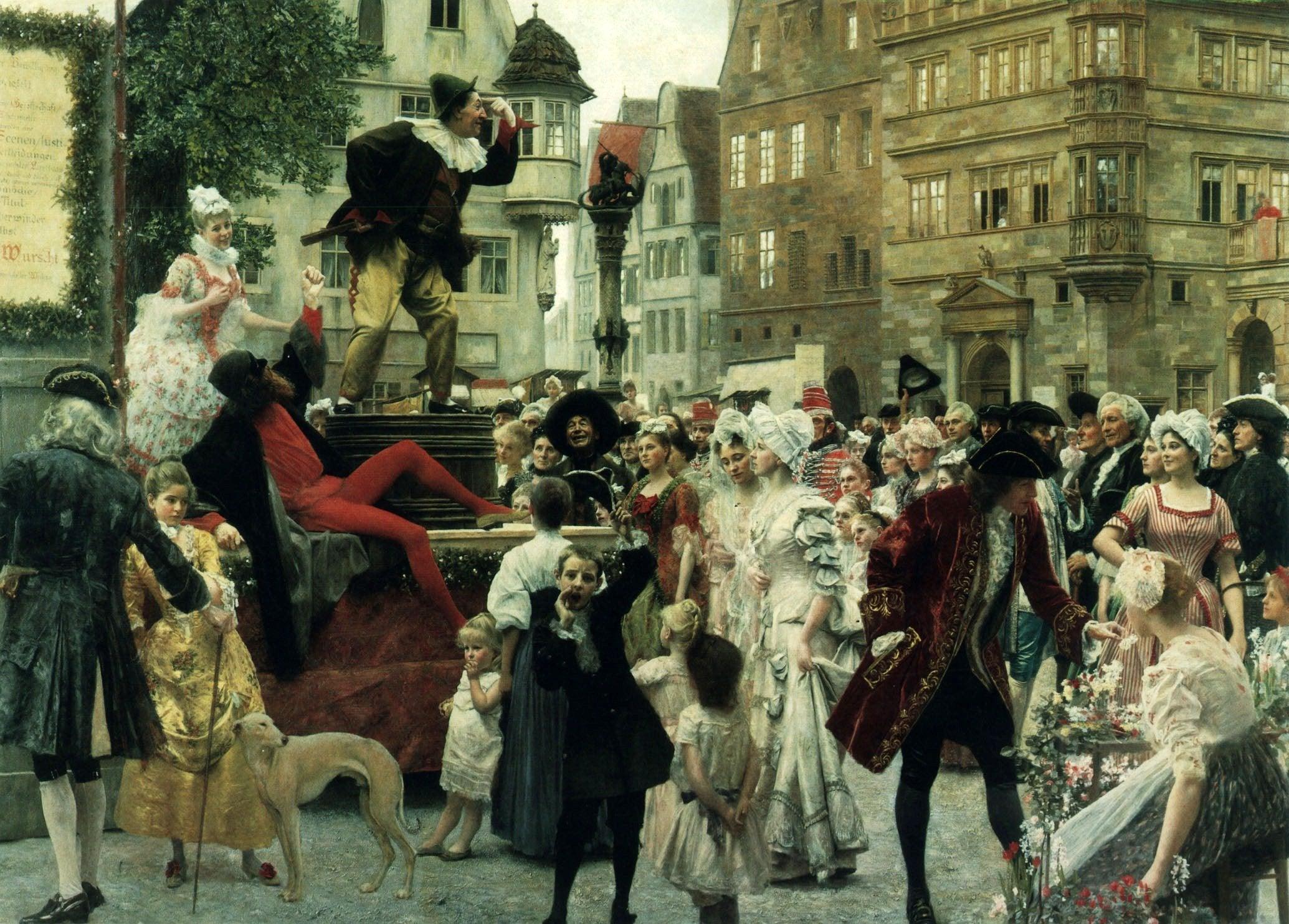Description
Gustav Klimt's painting "Hanswurst on the Fair Stage" is a masterpiece of the artistic style known as Art Nouveau. This work was created in 1901 and depicts a popular figure in 18th century German culture, Hanswurst, who was a court jester.
The composition of the painting is impressive, with a wealth of details and elements that combine to create a vibrant and life-filled scene. The fairground is filled with colorful and animated characters, each with their own personality and expression.
The use of color in this painting is particularly remarkable. Klimt uses a palette of bright and vibrant colours, which combine to create a feeling of joy and celebration. Gold and yellow tones are especially prominent, giving the painting a warm and welcoming glow.
The story behind this painting is fascinating. Klimt created this work for the Vienna Secession exhibition in 1901, which was an important event in the history of European art. The painting was very well received by the public and critics, and became one of Klimt's most famous works.
There are some lesser known aspects of this painting that are also interesting. For example, Klimt is believed to have been inspired by Shakespeare's "A Midsummer Night's Dream" to create this painting. Additionally, some critics have suggested that the painting is a subtle criticism of Austrian society at the time, which was undergoing significant changes in politics and culture.
In short, "Hanswurst on the Fair Stage" is an impressive work of art that combines detailed composition, vibrant use of color, and a fascinating story. This painting is one of Gustav Klimt's most important works and remains one of his most popular today.

